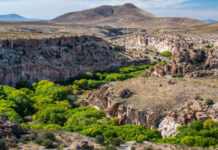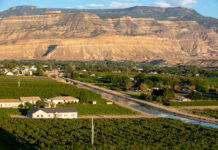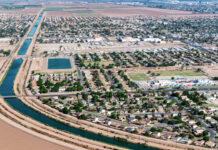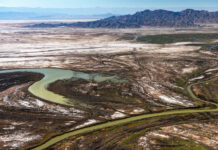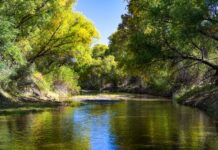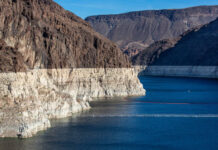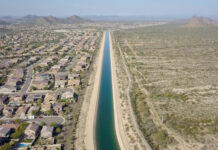Once a rich desert river, the Gila struggles to keep flowing
Population growth, agricultural withdrawals and climate change have badly diminished the river and threaten its future.
Crisis on the Colorado Part III: Running Dry– New Strategies for Conserving Water
Communities along the Colorado River are facing a new era of drought and water shortages that is threatening their future. With an official water emergency declaration now possible, farmers, ranchers, and towns are searching for ways to use less water and survive.
Proposed Tusayan development threatens Grand Canyon National Park
As a developer seeks an easement in the Kaibab National Forest, the character of surrounding towns and parks could drastically change.
A quiet revolution: Southwest cities learn to thrive amid drought
Southwestern U.S. cities have embraced innovative strategies for conserving and sourcing water in a changing climate.
Crisis on the Colorado Part V: Bringing New Life to a Stressed River
The Colorado River has been dammed, diverted, and slowed by reservoirs, strangling the life out of a once-thriving ecosystem. But in the U.S. and Mexico, efforts are underway to revive sections of the river and restore vital riparian habitat for native plants, fish, and wildlife.
“A generational historic struggle to regain our water”
The Gila River Indian Community is ensuring that members can use their own resources while helping solve water supply problems in the region.
What is dead pool? A water expert explains
Lake Mead and Lake Powell could reach water levels low enough to halt hydropower production.
Crisis on the Colorado Part IV: In Era of Drought, Phoenix Prepares for a...
Once criticized for being a profligate user of water, fast-growing Phoenix has taken some major steps — including banking water in underground reservoirs, slashing per-capita use, and recycling wastewater — in anticipation of the day when the flow from the Colorado River ends.
Solving water insecurity on the Navajo Nation – Water Buffs Podcast ep. 7 – Kaitlin...
About one-third of Navajo Nation residents lack running water in their homes and water pollution remains a serious issue in the region. We talk to Kaitlin Harris of DigDeep’s Navajo Water Project about solutions to these pressing problems.
Early peak runoff for Western Slope rivers
Snowpack in Colorado is melting earlier than expected due to an increase in dust storm severity.



